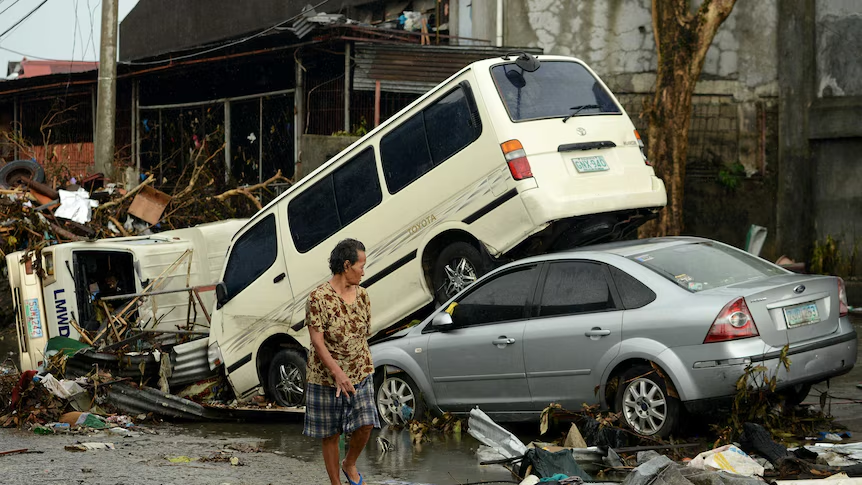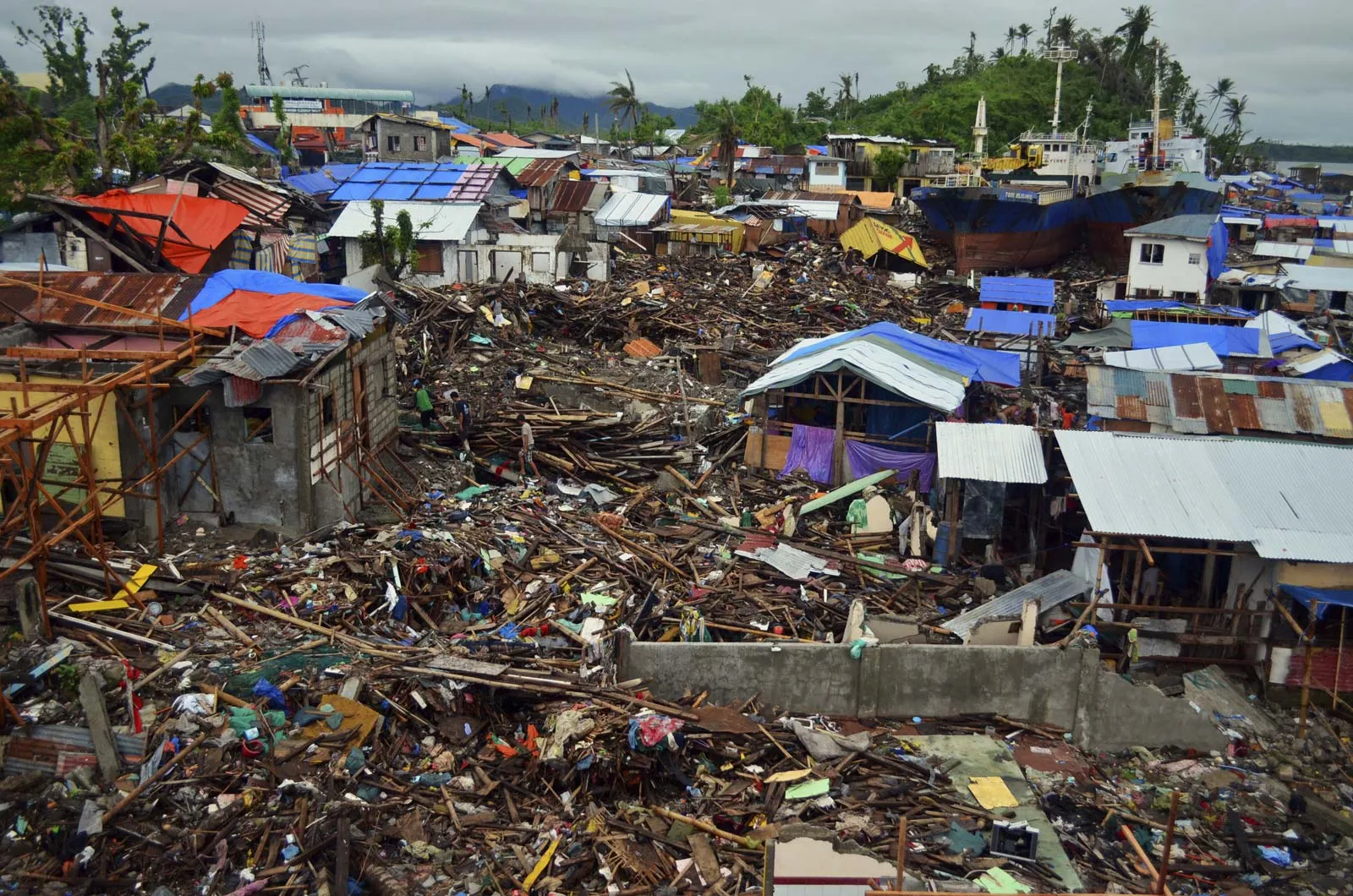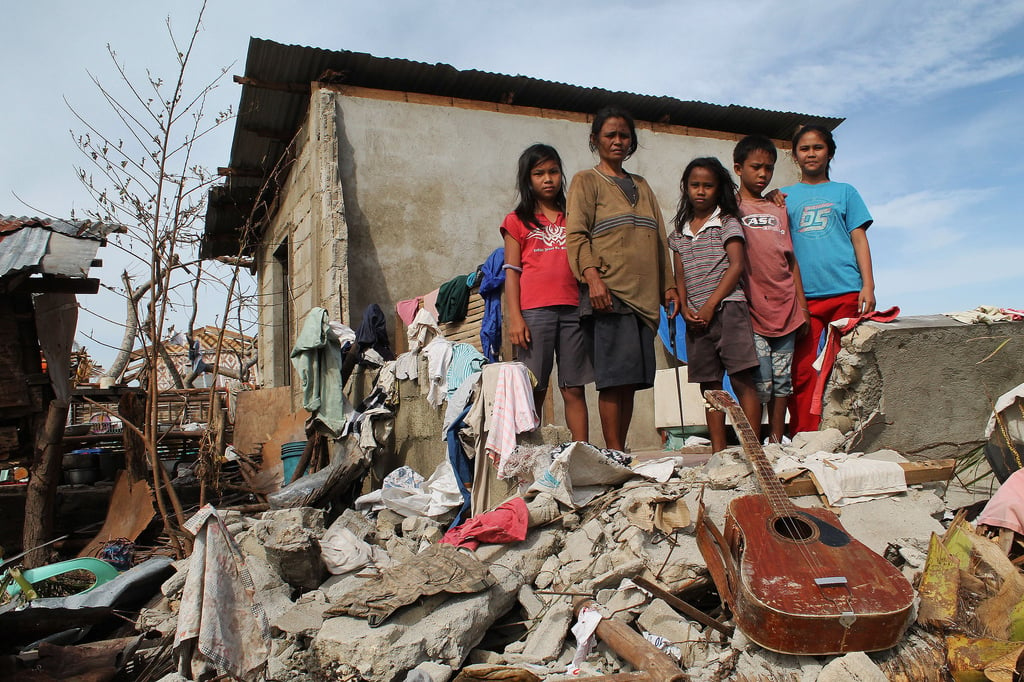Haiyan Catastrophe: Absolutely Devastating Lessons
In the annals of meteorological history, Typhoon Haiyan, known locally as Yolanda, stands as a stark reminder of nature’s unparalleled might. Striking the Philippines on November 8, 2013, Haiyan earned its place among the most powerful tropical cyclones recorded, with wind speeds exceeding 195 mph. This category 5 super typhoon not only devastated vast regions but also tested the resilience of the nation’s disaster management systems.
As we approach the ten-year mark since this catastrophic event, understanding the fresh insights and evolutions in response since then remains crucial. The subsequent sections delve into the lessons learned from this unprecedented storm, assessing the transformations in disaster preparedness, government policies, and community resilience, with an examination of the updated developments over the past decade.
The Immediate Impact of Typhoon Haiyan
Typhoon Haiyan made landfall with an intensity that left communities scrambling. The provinces of Leyte and Eastern Samar bore the brunt of its rampage, with Tacloban City enduring catastrophic damage due to storm surges that reached as high as 25 feet. In the immediate aftermath, the storm claimed over 6,000 lives and left approximately 4 million people displaced, marking it as one of the deadliest typhoons in Philippine history. Beyond the grim toll on human lives, Haiyan inflicted widespread destruction on infrastructure, homes, and livelihoods, leading to losses estimated at over $5 billion. The storm laid bare the vulnerabilities in urban planning, emergency response, and environmental policies, prompting a nationwide and global reassessment of current practices.
The immediate chaos unfolding in the wake of the typhoon underscored significant challenges. Access to hometogel affected areas was severely hampered by the destruction of roads and airports, complicating the delivery of urgently needed food, clean water, and medical supplies. Moreover, the devastation of communication lines made coordination among relief organizations difficult, delaying responses and exacerbating human suffering. These initial failures highlighted crucial gaps in disaster preparedness and risk assessment, setting the stage for future improvements.

Early Responses and International Aid
In response to Haiyan’s devastation, a massive humanitarian effort ensued, spanning both local initiatives and international aid. The Philippine government, despite being initially overwhelmed, quickly coordinated with international partners to mobilize resources. Notably, countries such as the United States, Australia, Japan, and the United Kingdom were among the primary donors, providing financial assistance, relief supplies, and personnel. International agencies including the United Nations, the Red Cross, and various non-governmental organizations also played pivotal roles in delivering aid and facilitating recovery operations.
However, the scale of the disaster meant that institutional frameworks were severely tested. Reports emerged of bottlenecks in distribution networks, delays attributed to bureaucratic hurdles, and lack of logistical preparedness for such a large-scale calamity. On the ground, rescue and relief operations faced challenges due not only to the logistical obstacles but also to local governance issues, where coordination between national and local disaster response units was inconsistent.
Despite these hurdles, the collaborative international and local response was crucial in averting a more profound humanitarian crisis. The infusion of aid enabled temporary relief in the form of tents, food, and water. More profoundly, it initiated dialogues on strengthening emergency response systems and prompted the Philippine government to rethink its disaster risk management strategies.
Evolution of Disaster Preparedness Strategies
In the wake of Typhoon Haiyan, a defining moment in the Philippines’ approach to disaster management emerged. Recognizing the shortcomings exposed by the storm, the government embarked on comprehensive reforms aimed at bolstering disaster risk reduction strategies. Central to these reforms was the enhancement of early warning systems. The government invested in state-of-the-art technology to improve weather forecasting accuracy and established more robust communication networks to ensure that warnings were disseminated efficiently and effectively to communities at risk.
Furthermore, there was a significant emphasis on community-based disaster readiness. The government prioritized education programs aiming to empower local populations with knowledge about disaster preparedness and emergency procedures. Schools incorporated disaster readiness drills, and local communities organized hazard mapping and risk assessment activities, tailoring response strategies to specific geographic and socioeconomic contexts.
The architectural landscape also saw a shift. Building codes were revisited and reinforced to ensure that new constructions could withstand harsh weather conditions. In areas prone to flooding and storm surges, urban planning was reconsidered, promoting the development of infrastructure with natural disaster resilience in mind. These enhancements reflected a shift towards a more proactive, rather than reactive, approach to disaster management.
Climate Change and Its Role
Typhoon Haiyan’s unprecedented intensity brought climate change discussions to the forefront in the Philippines and globally. Scientists posited that anthropogenic climate change might be intensifying storm activities, leading to more formidable and unpredictable weather patterns. The correlation between rising sea surface temperatures and the ferocity of storms has been increasingly under scrutiny, emphasizing the importance of climate action in mitigating future disasters.
In response to these insights, the Philippines has taken an active role in international climate negotiations. As one of the countries most vulnerable to climate change impacts, it has advocated for enhanced global cooperation and commitments to reduce greenhouse gas emissions. Domestically, the introduction of green policies and sustainable practices has been promoted to address environmental vulnerabilities. Renewable energy projects, reforestation programs, and coastal defense initiatives have gained momentum as parts of a broader strategy to mitigate the future impacts of climate change.
Enhancements in Risk Governance
Post-Haiyan analysis highlighted the need for systemic reviews of governance structures related to disaster management. Consequently, the Philippine legislative and executive branches pursued significant reforms. The landmark legislation was the enhancement of the National Disaster Risk Reduction and Management Act, adding clear directives to ensure that all disaster risk management activities were well-coordinated across all levels of government and sectors.
Several agencies were restructured to eliminate redundancies and improve efficiency in disaster response tasks. The role of the National Disaster Risk Reduction and Management Council (NDRRMC) was expanded to act as the primary coordinating entity for disaster efforts, ensuring that roles and responsibilities were clearly delineated between various actors from the grassroots to the national level.
Furthermore, the budget for disaster risk reduction was significantly increased, affirming the government’s commitment to preparedness initiatives. Investments were funneled into hazard mapping technologies, community training, and capacity-building programs for local government units (LGUs). These enhancements not only aimed to improve immediate response capabilities but also to instill a culture of preparedness across the country.

Lessons in Resilience and Community Recovery
Haiyan Catastrophe: The events following Typhoon Haiyan provided key lessons in resilience, particularly in the context of community recovery and adaptation. The typhoon’s aftermath saw communities banding together, fostering a spirit of solidarity and mutual support. Localized relief efforts and volunteerism demonstrated the power of community action, proving instrumental in recovery and reconstruction efforts.
Particularly noteworthy were efforts in rebuilding livelihoods, critical in the context of economic recovery. Organizations empowered local communities to participate in livelihood restoration programs focused on sustainability. Skills training and employment opportunities were created to reintegrate affected populations back into economic activities. Moreover, the importance of mental health support was recognized, with psychosocial care as a vital component of recovery initiatives to address the trauma experienced by many survivors.
Since Haiyan, there has been a heightened focus on building back better. Reconstruction efforts prioritized not merely restoring the status quo but implementing improved, more resilient infrastructures. Programs were established to help communities understand climate-proofing strategies, ensuring that the rebuilt structures were more robust against future storms. These initiatives underscored the importance of adaptability and resilience in fostering long-term recovery and community well-being.
Haiyan Catastrophe: Technological Innovations and Future Directions
The Haiyan catastrophe has spurred significant technological innovations aimed at improving disaster response and management. Forecasting advances have been a critical development. The deployment of advanced meteorological satellites and the use of big data analytics have significantly improved the accuracy of storm predictions, allowing more precise modeling of potential impacts.
Digital platforms have also revolutionized disaster communication. Social media and mobile applications have proven indispensable in disseminating real-time information and coordinating rescue operations. The integration of these technologies into official disaster management frameworks reflects a progressive move towards leveraging innovation for more effective disaster response.
Looking forward, the Philippines aims to harness artificial intelligence (AI) and machine learning to predict disaster impacts more accurately and efficiently allocate resources. Initiatives are underway to create AI models capable of analyzing climatological data to forecast extreme weather events with greater precision. The government is also keen on expanding the use of drone technology for rapid damage assessment and delivery of aid to inaccessible areas.
Haiyan Catastrophe: The Role of International Collaboration
Haiyan’s impact triggered a reevaluation of international collaboration strategies in managing large-scale disasters. The event underscored the need for enhanced global partnerships not only in immediate relief efforts but also in long-term recovery and resilience-building initiatives. Since then, the Philippines has engaged in a more collaborative approach with international agencies, gaining insights and resources vital for improving disaster resilience.
These partnerships have led to technological exchanges, capacity-building, and institutional strengthening. Collaborative projects have been initiated to upgrade early warning systems and to develop community-based adaptation strategies that are sustainable and context-specific. These endeavors exemplify how international cooperation can be a powerful tool in enhancing a nation’s disaster preparedness and response systems.
Moreover, the Philippines has served as a case study in international fora on disaster risk management, sharing its lessons learned and fostering discussions on global strategies to mitigate the impacts of climate-induced disasters. This has reinforced its position as both a recipient and contributor to global knowledge on disaster resilience.

Conclusion: Future Outlook for Disaster Preparedness in the Philippines
As we reflect on Typhoon Haiyan nearly a decade later, the lessons learned have prompted significant strides in disaster preparedness and response, not only in the Philippines but also globally. The typhoon underscored the complex interplay between disaster risk management, development planning, climate change adaptation, and community resilience. The progress since Haiyan demonstrates a clear commitment to creating more robust systems that better anticipate and respond to natural disasters.
Future efforts in the Philippines will likely focus on further technological integration, reinforced community engagement in disaster preparedness, and strengthened governance and policy frameworks. These approaches will ensure that disaster risk management remains adaptive and responsive to evolving challenges in an era of increased climatic volatility.
The recognition of climate change as an underlying factor in the intensification of natural calamities remains crucial. As the global community continues to grapple with the intricacies of climate change, the need for sustained and informed action grows ever more urgent. The Philippines’ proactive stance and experiences can serve as invaluable lessons for other nations facing similar challenges, emphasizing that preparedness, resilience, and international cooperation are key to navigating the uncertain future of global environmental threats. If you like reading this article, then please consider visiting californiatypewriter to find more article like this.










